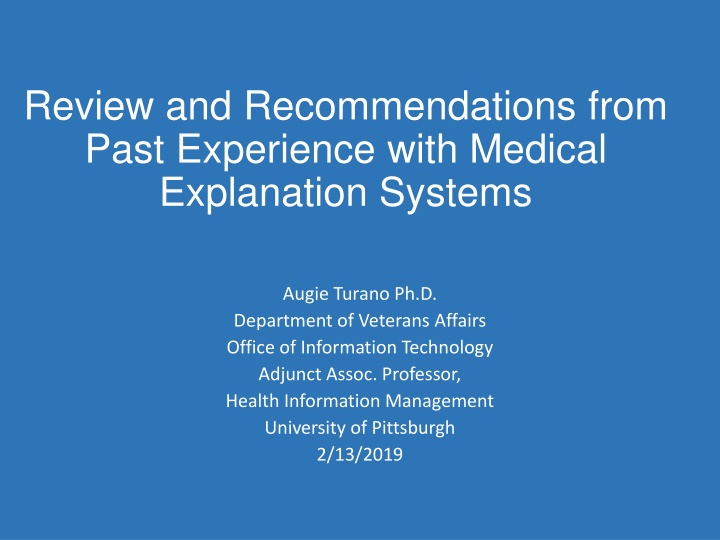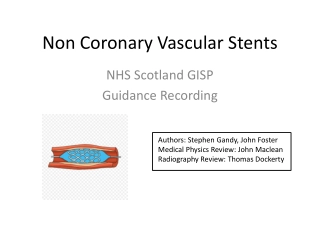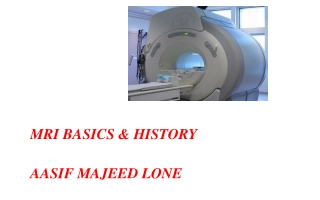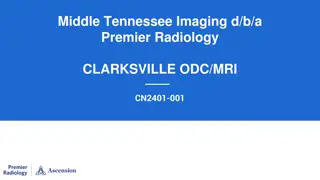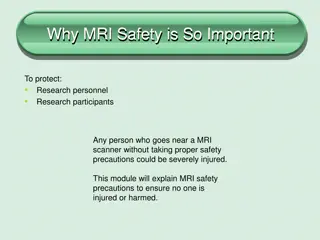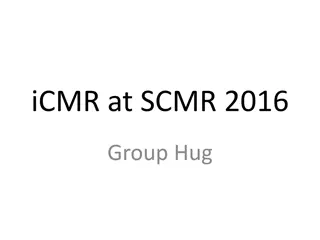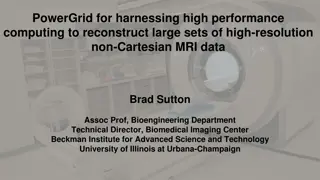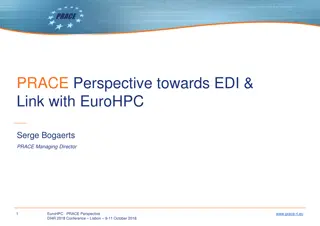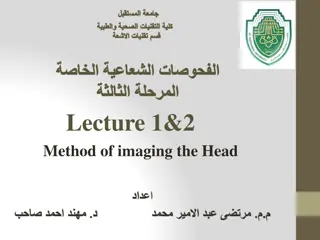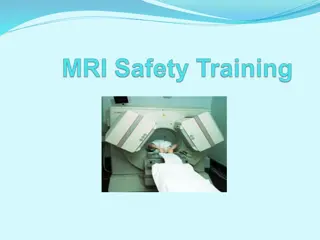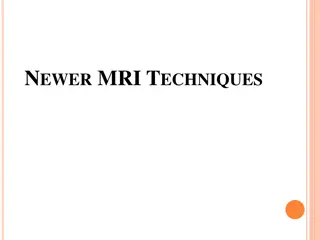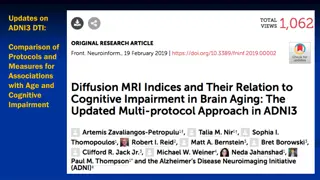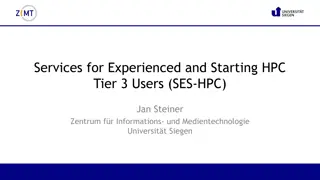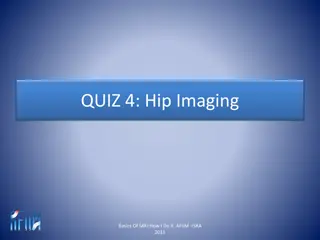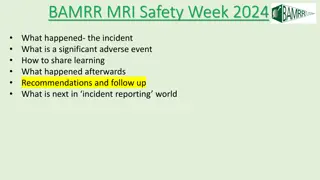MRI Acquisition: HPC for Data-Intensive Research at UH
The National Science Foundation's Major Research Instrumentation Program funds the acquisition of multi-user research instruments to advance science and engineering research. At the University of Hawaii, an MRI will upgrade the HPC to support data science, machine learning, deep learning, and AI, benefiting early-career researchers and enabling new multidisciplinary research efforts.
Download Presentation

Please find below an Image/Link to download the presentation.
The content on the website is provided AS IS for your information and personal use only. It may not be sold, licensed, or shared on other websites without obtaining consent from the author.If you encounter any issues during the download, it is possible that the publisher has removed the file from their server.
You are allowed to download the files provided on this website for personal or commercial use, subject to the condition that they are used lawfully. All files are the property of their respective owners.
The content on the website is provided AS IS for your information and personal use only. It may not be sold, licensed, or shared on other websites without obtaining consent from the author.
E N D
Presentation Transcript
Review and Recommendations from Past Experience with Medical Explanation Systems Augie Turano Ph.D. Department of Veterans Affairs Office of Information Technology Adjunct Assoc. Professor, Health Information Management University of Pittsburgh 2/13/2019
Explainable AI https://medium.com/@raeidsaqur/explainable-machine-learning-5-must-read-papers-95660d9f0c72 Dave Gunner
Diseases Have Trajectories Health care spending Health Status Early Clinical Symptoms Healthy / Low Risk At Risk High Risk 20% of people generate 80% of costs Value-based Health Care System Source: IBM Global Business Services and IBM Institute for Business Value
We Always Want to Know Why? 1. 2. 3. 4. 5. Why did I get diabetes? Why did I develop renal disease? Why did I get shingles? Why did the computer say this cell was cancerous? What is the likelihood of catching the flu? For #4 we need an explanation no one wants to put their full trust in a black box, but all require knowledge data points. Knowledge is critical to building expert systems that utilize AI techniques. Data is essential for creating models, rules, learning
xAI is Important in Most AI Why did the self driving car hit the person? Why did the lion image get classified as a cat? Why did the self driving car avoid a tree limb shadow? Prominent citizen photo on a bus recognized as a jay walker Amazon HR reportedly used an AI-enabled recruiting software that was gender biased to males
Trust in Black Boxes? Many times we don t really know why Neural Nets or other AI tools make the choices they do. As models become more complex, the task of producing an interpretable version of the model becomes more difficult. Clinical implementations of machine learning that are accurate, robust and interpretable will eventually gain the trust of healthcare providers and patients.
Knowledge Representation Knowledge Representation and Reasoning How to encode knowledge and reason from it Humans do it all the time (common-sense knowledge and reasoning, expert knowledge and reasoning) First-order logic, ontologies, rules, knowledge-bases Provision for Uncertain knowledge, probabilistic reasoning Encode knowledge about diseases, symptoms etc. and then predict diagnosis It is a hybrid between ML and KB that is most likely to yield the most useful results
Learning How do you learn? Memorize Facts Conceptualize you understand things Problem solving Use of common sense Repetition Teaching a machine Read text try to understand machines not good at this- lots of ambiguity explicit specification of conceptualization, body of knowledge describing some domain Compute probabilities learning algorithms 8
Machine Learning Improve performance by learning from examples Humans do it all the time (learn to walk etc., develop special skills) Rule-based methods: e.g. decision-trees Statistical methods: e.g. neural networks, support vector machines, maximum entropy models Learn to diagnose a disease from previous examples of patient data (Training) 9
Emergence of AI in Medicine Medicine has become a data-rich quantitative field with various electronic data capturing methods and data management systems for both clinical care and biomedical research, this is transforming medicine from art to science The availability of data in electronic form (documents, articles, clinical notes, electronic health records etc.) has increased the necessity and scope of automatic intelligent processing using AI techniques 11
AI in Medicine Applications of AI in Medicine Help in diagnosis and making therapeutic decisions Predict outcomes Examine trends Recommend Treatments/Therapy Support healthcare workers in acquiring, manipulating and searching data Guide researchers in making discoveries 12
AI in Medicine: Sub-Areas Knowledge Representation Design of good ontologies to enable data exchange, standardization, communication, e.g. UMLS, SNOMED-CT, Gene Ontology etc. Encode rules obtained from domain experts to automate processing and reasoning Enable discovery of new and useful knowledge and refine existing knowledge 13
AI in Medicine: Sub-Areas Natural Language Processing Unlock the value buried in text and narrative records so that content can be used for automated processing Interact with computer in natural language, ask clinical questions in natural language to search research articles Information Retrieval: Find the required information from a collection of documents, answer questions 14
Different Sub-Areas of AI Machine Learning Improve performance by learning from examples Humans do it all the time (learn to walk etc., develop special skills) Rule-based methods: e.g. decision-trees Statistical methods: e.g. neural networks, support vector machines, maximum entropy models Learn to diagnose a disease from previous examples of patient data 15
Clinical Reasoning System (CRS) Based on IBM Watson in the VA The Clinical Reasoning System (CRS), based on Watson technology, was developed so the VHA can assess the technology against its desired capabilities. CRS provides for a user experience for a variety of clinical use cases in which Primary Care Physicians (PCPs) can interact with patient information, review an updated list of the patient s problems, and find key evidence concerning a patient s condition. You can drill down into problems or search for key symptoms, signs, and other evidence that underlies the presentation of problems included on the patient problem list. It also supports discovery and finds potential answers to medical questions, as may be found in the corpus of general medical knowledge, along with supporting evidence.
IBM Watson Data Gathering and Analysis Slide from IBM
PTSD Diagnostic Criterion A: Exposure Stressor /Traumatic Event: actual or threatened Death Serious injury Sexual violation Who experiences the traumatic event Self: Direct experience of traumatic event (A1) Others: Indirect experience of traumatic event of others Witnessing others experiencing the event (A2) Learning of the experience (violent or accidental) of a loved one (A3) Repeated or extreme exposure to details of the traumatic event (A4) e.g. first responders collecting human remains, police repeatedly exposed to details of child abuse Exposure to media does not meet exposure criteria unless it is work related Sudden catastrophic medical conditions can qualify VA / Mitre 2012
Symptom Overview Intrusion (Criterion B) Avoidance (Criterion C) 1 or more of B1: Intrusions B2: Nightmares B3: Flashbacks B4: Emotional reactivity B5: Physical reactivity Mood & Cognition (Criterion D) 2 or more of D1: Amnesia D2: Negative beliefs D3: Guilt D4: Negative emotions D5: Loss of interest D6: Distant and cut-off D7: Low positive emotions 1 or more of C1: Avoid thoughts C2: Avoid places/activity Arousal & Reactivity (Criterion E) 2 or more of E1: Aggression E2: Reckless/self-destructive E3: Hypervigilance E4: Startle E5: Concentration E6: Sleep VA/Mitre
Assessment of Patient for PTSD Full history, physical exam and mental status examination To develop a PTSD treatment plan specific to the individual patient To identify medical conditions that require treatment and/or are contributing to symptoms Psychosocial history should include assessment of the traumatic event and patient response to it prior stressful life events and losses coping skills ego resources and self-capacities environmental and social resources Assess for safety of environment, dangerousness, risks to self and others Assess medications, herbals, supplements, OTC drugs, caffeine, etc Diagnostic tests as clinically indicated: Laboratory: TSH, Complete Metabolic Panel, Hepatitis, HIV, HCG (for females), CBC, UA, Toxicity/EtoH panel, and other tests Other assessments may be considered (radiology studies, ECG, and EEG) VA / Mitre 2012
CRSA Study Design & Evaluation Sophistication of System Capability Depends on Nature of the EHR data If DBQ data are scanned into EMR, it would make the diagnosis of PTSD and problem list generation of symptoms very simple for the system Data type required for the diagnosis is probably mostly unstructured clinical notes (no radiology, laboratory, etc) is use of PTSD templates common? Sample Selection Some symptoms of PTSD are less prevalent than others need enough EHR samples for those less prevalent symptoms EHR sample should contain clinical scenarios or test cases that would require different management Consider using recommendations from 2010 VA/DoD Guidelines to select CRSA test cases (see Appendix) Consider including recommendations from literature after 2014 to select CRSA test cases To test the ability to process multiple data types to diagnosis PTSD independently of clinician diagnosis (e.g. rule out other medical and substances of causes of symptoms), consider including EHR records with: Abnormal head CT result Abnormal laboratory results Prescription drugs known to cause symptoms Once active and inactive problems (e.g. PTSD diagnosis, symptoms, etc) are defined, need to have samples of both for each type of problem VA/Mitre
Physician Correlation to be Proven I m not sure what will be most useful since the object may be to find differences in notes between patient with and without the measure of interest (eg suicide, PTSD admission, Pneumonia, CHF, MI). Here are some variables that appeared related to suicide and CHF admission: Suicide: age, suicidal ideation, marital status, disability, living conditions, PTSD, Alcohol, depression, missed appointments, ER visits, substance abuse, anxiety, suicide assessment, mental health visits and care, smoking, benzodiazepine use, antidepressants, sleep medications, sexual dysfunction, pde 5 inhibitors, refused influenza vaccination CHF exacerbation: age, history of CHF, weight change, SOB, PND, orthopnea, oliguria, chest pain, change in diuretics, BNP, troponin, heart rate, a fib, rales, S3, EKG reading, echocardiogram reading, stress test results, anticoagulation, edema, CXR results
Successes with AI in medicine Prediction of Melanoma from skin images - 5.4 million new skin cancer diagnoses each year, 97% five-year survival rate if early detection, 80% if not. Stanford University researchers have trained an algorithm to diagnose skin cancer using deep learning with 130,000 images. Through the Face2Gene app, facial recognition software is being combined with machine learning to help clinicians diagnose rare diseases (in this case, from facial dysmorphic features). Patient photos are analyzed using facial analysis and deep learning to detect phenotypes that correlate with rare genetic diseases.
Success (continued) Watson for Oncology has an advanced ability to analyze the meaning and context of structured and unstructured data in clinical notes and reports that can provide information important to selecting a treatment pathway. By combining attributes from the patient s EHR with clinical expertise, external research, and data, the program identifies potential treatment plans for a patient. (Narrow AI) Researchers used data from Guangzhou Women and Children s Medical Center in southern China and created models applying an automated natural language processing system using deep learning techniques to extract clinically relevant information from EHRs. In total, 101.6 million data points from 1,362,559 pediatric patient visits presenting to a major referral center were analyzed to train and validate the framework. Outcomes were as good as trained physicians, typically 80-90% accurate. https://www.nature.com/articles/s41591-018-0335-9
Conclusion AI in medical diagnostics is still a novelty, with many clinicians still left to be convinced of its reliability, sensitivity and integration into clinical practice without undermining clinical expertise Possibilities are endless, chatbots, interpretation of cell scans, slides, images etc, diagnosis from EHR data (genotypes, phenotypes) and there is a huge push from Venture capital investment companies. Combination of ML and AI will probably yield most useful outcomes, not accuracy alone.
